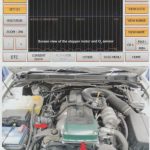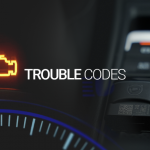
If you are having trouble reading your vehicle’s OBD codes, you are not alone. This article is going to help you understand the most common codes, including P0132 and P2112.
P0132
There are several reasons why a vehicle can develop diagnostic trouble code P0132. A faulty oxygen sensor or a malfunctioning mass airflow sensor could be the cause of this code. You can resolve this problem by contacting a mechanic who can check the codes and repair the car. If the symptoms do not go away, you may want to consider purchasing a diagnostic scanner. However, it is not recommended that you do it yourself if you do not have any experience in repairing cars.
A common way to identify these problems is by checking the Malfunction Indicator Lamp or Check Engine Light on the dashboard. When the check engine light is illuminated, it indicates a problem with the engine or transmission. Any code could trigger this light, but a P0132 code will cause the check engine light to illuminate. This will require a diagnostic tool called an OBD2 scanner. To diagnose P0132 in your car, you will need an OBD2 scanner tool.
Another cause of P0132 in a Ford may be the oxygen sensor. This sensor detects the amount of oxygen in the exhaust gas as well as outside air. In this case, the oxygen sensor’s signal is above the normal range. Therefore, the voltage of the sensor is too high or too long. This could damage the three-way catalyst. The solution is to replace the oxygen sensor. But, if this still doesn’t solve the problem, you should contact a mechanic and have it replaced.
If you are still confused about why you’re getting the P0132 code, you can use a voltage test light to check if the oxygen sensor is malfunctioning. You can purchase this device from Walmart and connect it to the wiring or harness plug. If a short circuit occurs, the light will illuminate. Once the oxygen sensor is checked, the problem will be fixed. You can then focus on repairing your car, and the issue will go away.
There are a number of other reasons why your Ford may show P0132 in its diagnostic scan. Most likely, you are experiencing an issue with the powertrain control module or the engine. This can be caused by a damaged oxygen sensor or a malfunctioning wiring harness. If these are the causes of P0132 in Ford, you can replace it. It will cost you less than $200, so it is worth the price of a replacement.
You may need to replace the oxygen sensor, and this will cause the code to appear. The other issue could be the oxygen sensor itself, but you don’t want to risk replacing it without consulting a professional mechanic. You can save money and time by having a professional check the oxygen sensor instead. A professional mechanic can also reset the check engine light and evaluate stored trouble codes and freeze frames to diagnose the problem.
P2112
When your car’s powertrain malfunctions, you may see a P2112 trouble code on the dashboard. This indicates a malfunction with the throttle actuator control system. There are six different codes associated with this issue. If your car has a stuck throttle body plate, it may cause the powertrain control module to set the P2112 DTC. The powertrain control module is responsible for coordinating throttle position sensor readings with the gas pedal to determine what the problem is.
A malfunction in the engine control unit or throttle body actuator can also cause a P2112 code. If you can’t turn the engine off, the problem could be in the wiring harness. If you can’t turn off your car, you’ll need to fix the wiring harness. To fix the P2112 code, you will have to repair or replace the wiring harness. However, if you’re unable to fix the problem, you should consult a mechanic for advice.
Other causes of the P2112 code are a stuck throttle body actuator, a faulty powertrain control module, or a damaged throttle actuator. The symptoms of each problem are listed below. Listed below are some of the most common symptoms associated with P2112 Ford obd-ii error code. The cause of this code depends on how severe the problem is. If the throttle body is stuck open, the vehicle will either stall or run poorly. If the throttle body is stuck closed, the engine will have trouble starting. If it is stuck open, the vehicle may run poorly or even crash. A malfunctioning throttle actuator can also cause the wiring to misfire.
The cost of diagnosing a P2112 Ford obd code is estimated at $75-$150. Labor rates vary according to your location, vehicle type, and auto repair shop. Most auto repair shops charge between $75 and $150 per hour for labor. While labor costs will vary, the cost of a diagnosis for a Ford P2112 code will be minimal compared to the costs of repairing a faulty throttle body.
If you’re looking for the best way to diagnose your vehicle’s P2112 obd code, a technical service bulletin is a great place to start. The problem could be as simple as a stuck throttle plate actuator. The ECU will recognize this and set a failsafe mode in order to protect the engine. This failsafe mode will remain until the problem has been fixed.
If you have trouble diagnosing your car’s P2112 code, there are some easy steps you can take to repair the problem. First, you should find a manual for the specific model. Alternatively, you can look up the Technical Service Bulletin for your vehicle’s power plant, year, and model. This will save you time and effort. Also, you should be aware of the TSA bulletin for your specific car model and engine.
P21
The engine computer (PCM) constantly monitors the temperature of the engine and coolant in the radiator. The engine computer compares the temperature readings from the radiator’s coolant temperature sensor with the readings from the engine thermostat. If the difference between the two readings is out of specification, the code P2181 sets. The vehicle must be taken to a repair shop to have the issue diagnosed. The P21 code may be the first sign of a more serious problem.
A diagnostic trouble code can appear when the engine runs at low or high engine speeds. The powertrain control module checks for these malfunctions by periodically monitoring the voltage in the reduction level sensor circuit. If the voltage exceeds or falls below the limit, the test will fail. The odometer may also be faulty. If the code stays on for an extended period of time, the vehicle may have another problem, such as a faulty fuel pump.
If the code is present in your vehicle, it indicates that something is wrong with the throttle body. It could be stuck open or closed with carbon or could be misreading the position sensor. Trying to repair the code yourself will result in a wrong diagnosis. Follow the steps outlined by your mechanic carefully and be prepared to spend a little extra time on the problem. It’s worth spending a few extra dollars to get a proper diagnosis.
If you have a background in automotive repair, you may be able to diagnose a P2138 code yourself. Most DTCs share similar symptoms and affected areas, but there’s no one-size-fits-all solution for a P2138 code. Identifying the problem and performing a proper repair will allow you to avoid making any mistakes. If a wire is damaged or broken, make sure to check it thoroughly before you install any new parts.





